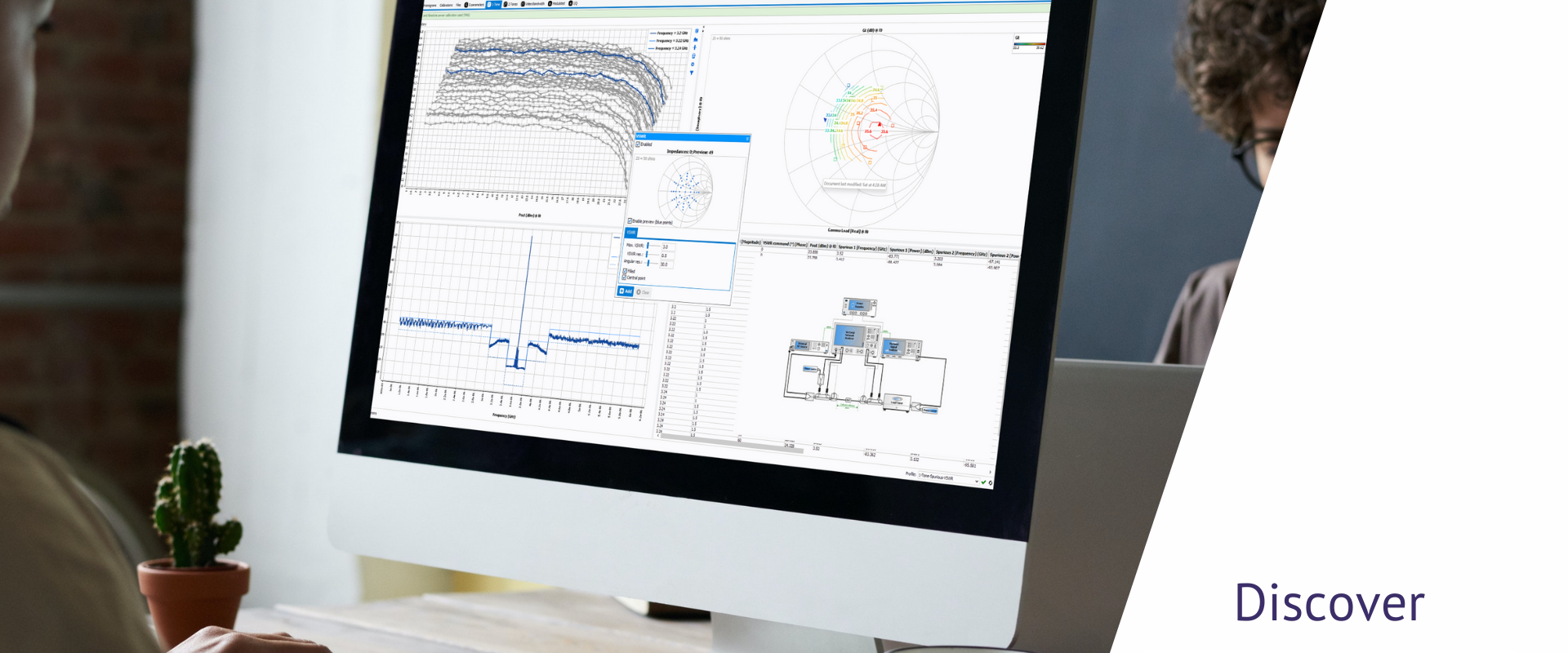AMCAD Engineering is pleased to announce the achievement of another milestone in developing its 50 Ohm circuit characterization software IQSTAR with the release of version 1.3. With the increase in the number of customers comes a list of new modules and features requirements to better address their challenges and increase their efficiency.
From IQSTAR 1.2 to IQSTAR 1.3
The new release of IQSTAR includes new measurement modules, features, and some improvements and bug fixes.
The following add-on modules are now available:
- IQS100B-22 VSWR Measurements
- IQS100B-25 Fast Spurious Detection
- WFG100-11 Advanced waveform Generator
Customers with an up-to-date support contract can take advantage of multiple features, improvements and bug fixes once they upgrade their version to the latest one, like:
- New Fast CW Sweep Mode
- New DC Measurement Selection functionality
- New IQ Measurement Interval Selection functionality
- Enhanced Live Visualization menus
- An updated list of instruments’ drivers
New VSWR Measurement Module IQS100B-22
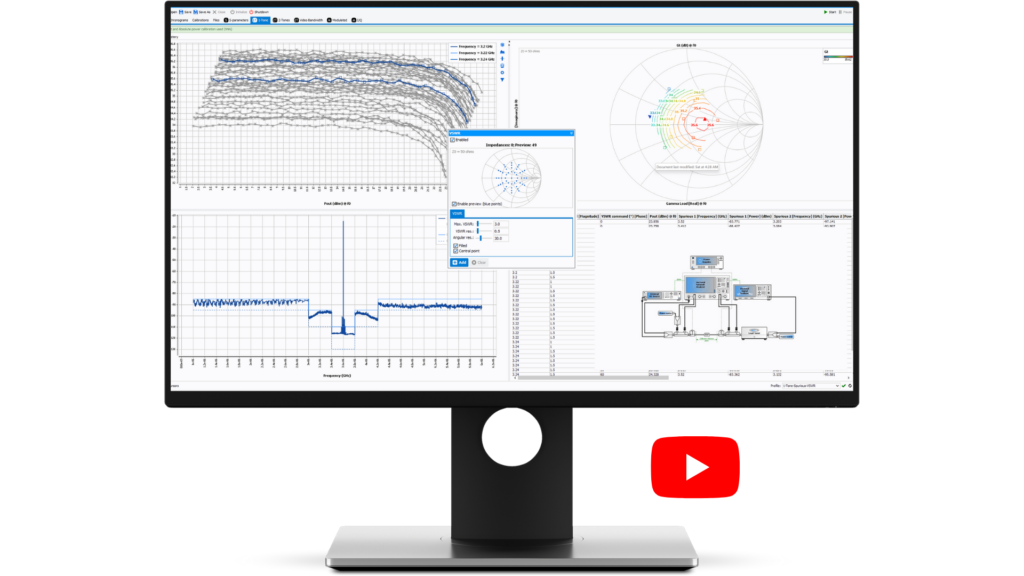
The specification for Power amplifiers is becoming more and more constraining. Customers require a higher level of ruggedness which becomes challenging for the designers, especially for high-power applications..
When driven with a modulated signal with high Peak-to-Average-Power-Ratio (PAPR), the output power can increase by 3 to 4 dB, risking a deterioration of the power amplifier or the communication system if the antenna is not presenting a perfect 50Ohm matching.
Our Customers requested to add the VSWR sweep to the other nested sweeps to support their power amplifier characterization process. Therefore, the setup editor was updated with an electro-mechanical impedance tuner as a new supported instrument. The calibration and visualization menus were enhanced with additional features to support this new measurement module
An automated bench that allows an easy assessment of the stability of the power amplifiers under multiple load impedances seems to be a must-have for many of our customers.
New Fast Spurious Detection Module IQS100B-25
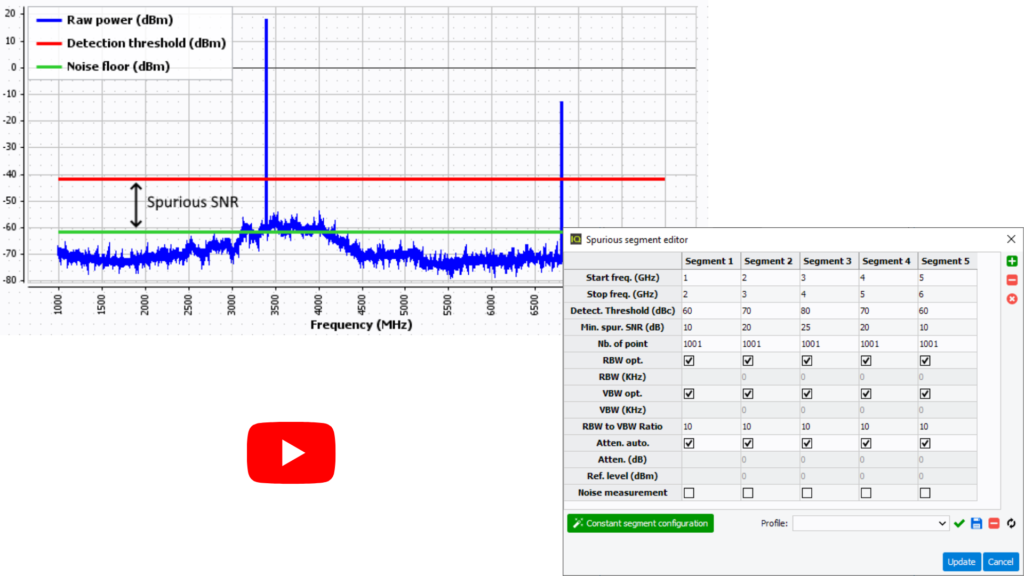
Spurious detection is an important step in the Design Validation Testing (DVT) and the Production validation testing (PVT) of RF and Microwave power amplifiers. Spurious emissions decrease the system performance and cause interference in adjacent frequency bands. Some industries like aerospace and defense must detect very low-level spurs.
A classical technique consists of reducing the resolution bandwidth to the narrowest to lower the noise floor of the equipment. However, the implementation simplicity of this technique comes at the cost of a very long measurement time, especially since the spurious location cannot be predicted in advance, which imposes a full scan of a large frequency bandwidth at a very low RBW level.
Even with new fast spectrum analyzers, spurious detection can take hours or even days when combined with nested loops of frequencies, biases, power levels, VSWR circles…
The new Fast Spurious detection module IQS100B-25 is introduced starting Release 1.3 of IQSTAR. It uses FFT filters to search spurs and reduce testing time by taking advantage of fast spectrum analyzers. The spurious research algorithm embedded in IQSTAR automates and speeds up the process. The test engineer can set different segments of frequency to analyze with different criteria to optimize the measurement time while making sure not to miss any spur in the most important frequency bands of the application.
New Advanced Waveform Generator Module WFG100-11
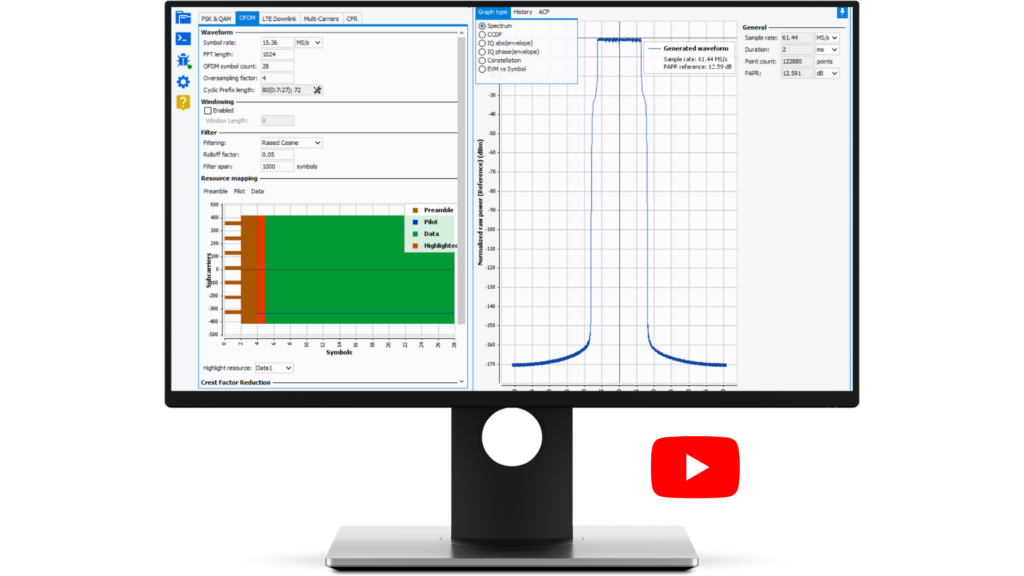
Power amplifiers must be tested under modulated signal conditions. With the multitude of standards in the communication industry, it is mandatory to generate different OFDM and 3GPP test signals to qualify the specification of the power amplifier. An integrated solution in IQSTAR was developed in release 1.3 to simplify the transfer of the IQ signal from the software to the signal generator without going through multiple software platforms.
The IQ signals can also be exported to an ASCII file for further analysis and modifications if needed. Multiple files can also be concatenated to create a multi-channel signal to apply to the Power amplifier.
IQSTAR 1.3 software improvements
New Fast CW Sweep Mode added to Module IQS100B-11
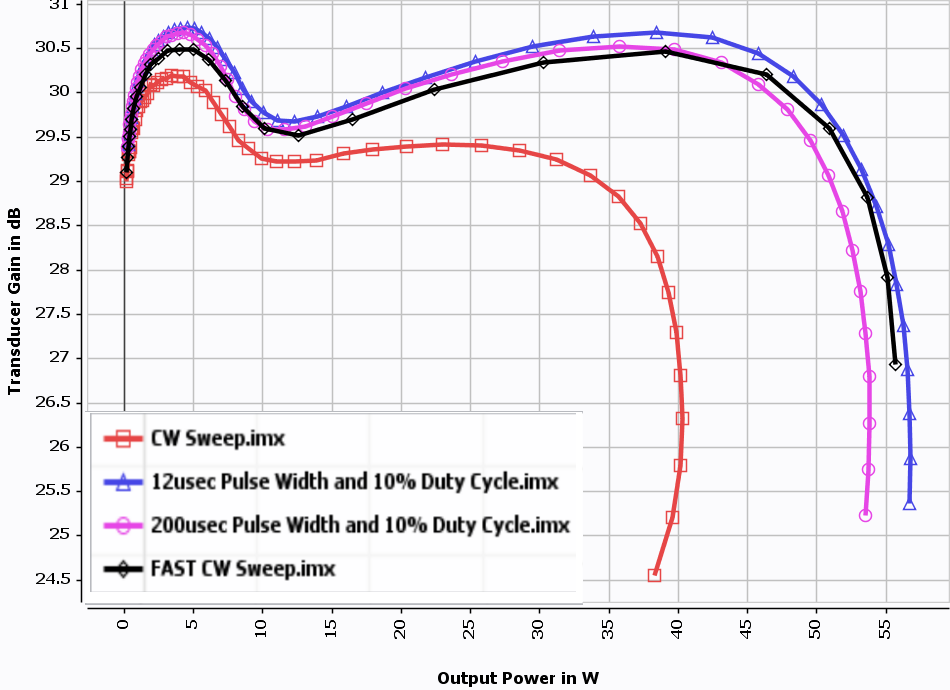
With the emergence of 5G technology, high power density devices are gaining popularity. The Power increase comes with a self-heating problem that needs to be mitigated. Pulsed measurements can be used to tackle this issue. However, some high-power amplifiers embed big coupling capacitors on the bias circuit, with a long time constant imposing long pulses to ensure a steady-state to measure the current and evaluate the Power-Added-Efficiency. Using long pulses defies the purpose of pulsed measurements as it does not allow the power amplifier to work in a quasi-isothermal condition.
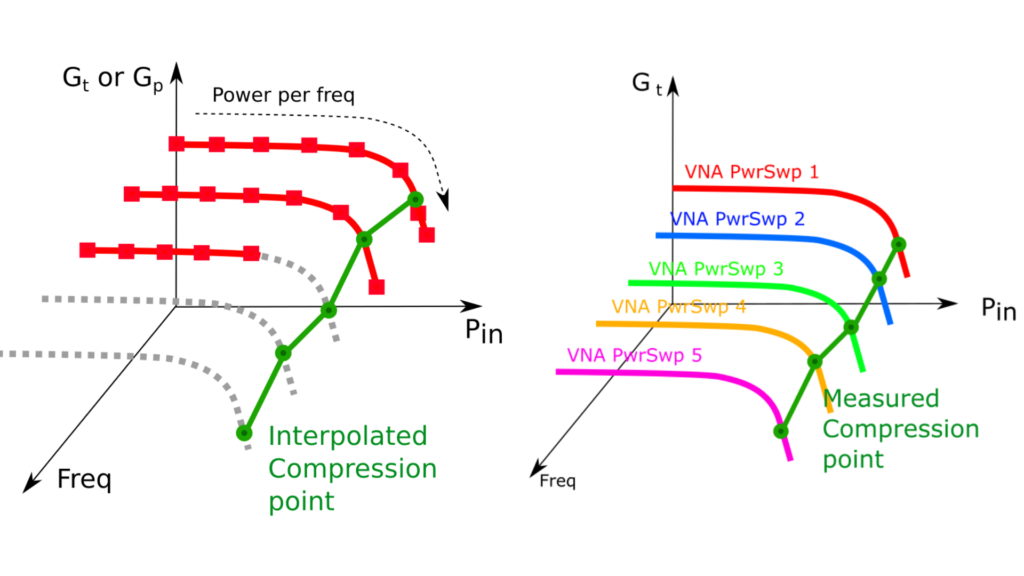
A new sweep mode was developed in release 1.3 to support high-power devices. The power ramp is generated in the Vector Network Analyzer (VNA), using the “FAST CW” sweep mode. The measured values (RF and DC data) are buffered inside each instrument until the end of the measurements, resulting in a great speed improvement compared to CW sweep and reducing the total exposition time to RF power, sources of self-heating.
This measurement methodology is crucial for high-power amplifiers test. Indeed, because of the self-heating when the RF signal is turned on, RF sweeps have to be run in a few milliseconds to keep the device under test in safe operating conditions. Customers with valid support contracts can access this feature when updating their version.
New DC Measurement Selection functionality added to Module IQS100-B10
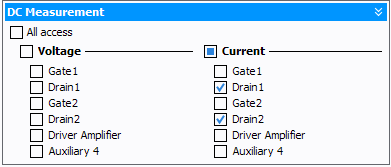
Increasing the throughput of a bench is a recurrent requirement from different customers. Most of the measurement time is spent on instrument triggering and reading. The Power supplies used to bias a Power amplifier can be a good source of time economy as most of the values are fixed, the software can be set to trigger the measurement only for the changing parameters ( ex: Drain Current) and ignore the parameters that are fixed (ex Drain Voltage or Gate current).
This capability increases the measurement speed considerably as the multimeters readout can be time-consuming, especially in pulse conditions. Customers with valid support contracts can access this feature when updating their version.
New IQ Measurement Interval Selection functionality added to Module IQS100B-40
The competitive market of Power Amplifiers for 5G networks imposes rigorous specifications that need to be considered during the measurements phase. The setup should allow a full characterization using realistic signals (as LTE, 5GNR …) and evaluate the degree of linearization that the Power amplifier can achieve. Customers impose their criteria; therefore, the application engineer should run the measurements in different conditions to support the end-user. Time spent in front of the instrument to get all these measurements can be quite long.
Different reasons can lead to a costly measurement time:
- Instruments remote connexion type (LAN, USB, GPIB, …).
- The number of samples transferred between the computer and the instruments.
- DPD methods and parameters optimizations
- Data processing and display optimizations
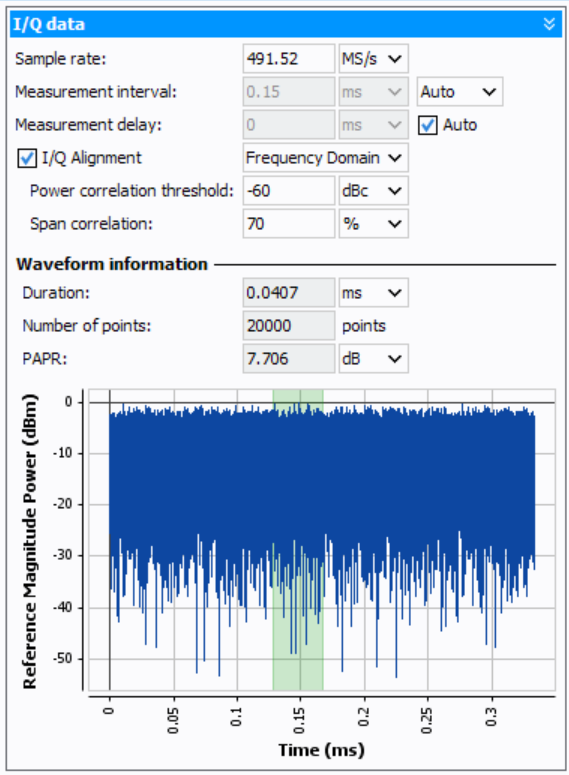
IQSTAR 1.3 embeds a new feature to identify and select the most representative waveform slice to analyze and optimize the measurement speed. Selecting the appropriate slice representing the original waveform’s statistical characteristics makes it possible to find a trade-off between measurement accuracy and speed. IQSTAR 1.3 allows the selection of the waveform slice to be measured and analyzed, using “measurement interval” and “measurement delay”.
Customers with valid support contracts can access this feature when updating their version.

